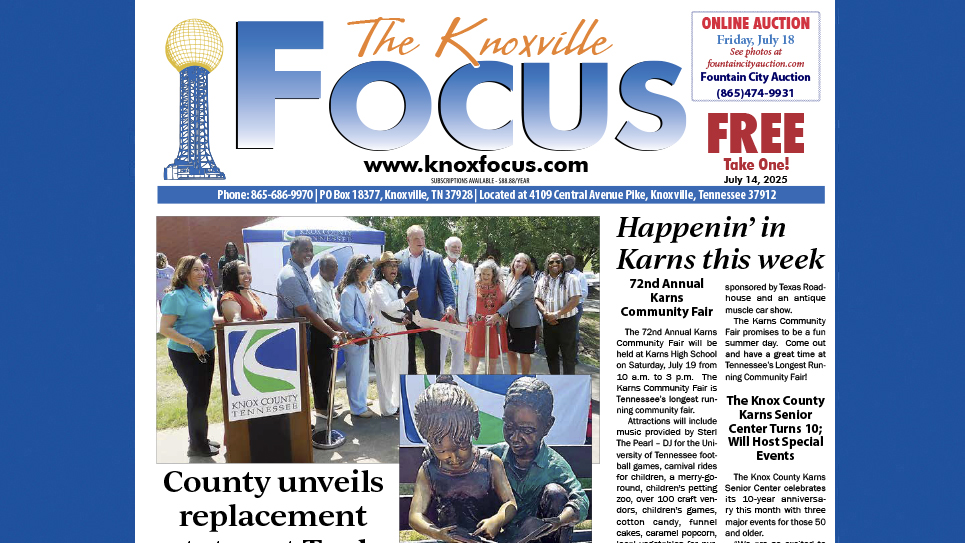By Mike Steely
Our region has seen a multitude of military forts built here and there, from early settlement through the Civil War. Some have been restored, like Fort Southwest Point in Kingston and Fort Loudoun near Vonore, but some have been all but forgotten.
Within an easy drive from Knoxville you can see the locations of some of the old forts. Visiting those sites and learning the history can be educational for you and your family.
Down in Benton, just off Highway 411, is the Fort Myer Blockhouse which was used during the forced removal of the Cherokee from our area. This fort was originally situated in Old Fort, Tn., near the Georgia state line in 1814 and was moved to Benton in modern times.
Hiwassee Garrison, between Decator and Dalton, Tn., was an important site across the river from Hiwassee Island, a major Cherokee town. Founded and built by Colonel Jonathan Meigs, the fort was abandoned after a few years. The only remains of that fort is a large cemetery nearby where Meigs and other early Tennesseans are buried. The cemetery is located east of Highway 60 in Rhea County, east on Sunset Drive and then to Garrison Road.
The fort site, on the banks of Chickamauga Lake, is now an archeological site and not available for visits.
Swaggerty Blockhouse, beside U. S. Highway 321 near Parrottsville and east of Newport, is a two-story fortification built over a natural spring. Some claim it wasn’t a fort at all but a cantilever barn built by a farmer named Jacob Stephens around 1860.
Frederick Swaggerty, a German immigrant, arrived in the Clear Creek area from Pennsylvania sometime around 1783. According to local sources, Swaggerty’s son James built the Swaggerty Blockhouse in 1787, presumably to protect his family from hostile Cherokee attacks. If that is true it would make the Swaggerty Blockhouse the only surviving blockhouse at its original site in our state.
Breastwork Fort is an unusual earthen fort atop Breastwork Hill overlooking Tazewell. The hastily built fortification surrounds a family cemetery there and was apparently thrown up by Union forces in 1863. Visitation of the fort is by way of a farm road entered behind the old downtown and through the farm to the top of the hill.
Pioneer David Chadwell and his family are buried there surrounded by the earthen fort walls which look south.
Tazewell is an interesting and very old town, a crossroads on the old Knoxville Highway and Highway 25E which was part of the Warrior’s Path and Boone trail.
Fort Hill overlooking Loudon is an interesting site, now with several stately homes. Built during the Civil War of earthen walls, some of which may still be seen, the site overlooked the much-disputed railroad bridge in the town and the comings and goings along the Tennessee River.
More locally we have the James White Fort atop a hill overlooking Knoxville. Originally built downtown many of the logs from the old fort were preserved and used in the construction of the current building there. There’s also three Civil War forts overlooking Knoxville including Fort Dickerson Park and High Grounds Park or Fort Higley. Fort Stanley was atop the ridge just to the east of Chapman Highway across from Fort Dickerson but that site has not been marked or reconstructed.
Fort Sanders, in the midst of that neighborhood, has long been built over but was probably the most noted Civil War site in Knoxville.
Knox County has many old fort sites including some settler’s homes that were fortified, including Campbell’s Station in Farragut, Cavitt’s Station, Fort Adair in Fountain City, Fort Byington on College Hill, Fort Stanley, Fort Dickerson and many smaller forts built around battery sites.
In recent history retired archeologist Dr. Charles Faulkner discovered a small Civil War fortification in Knoxville along the Third Creek Greenway.






